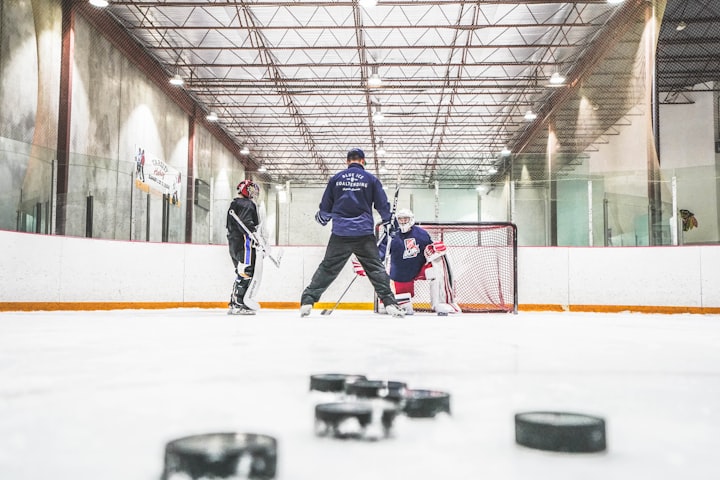Hockey
The Thrills and Skills of Hockey: A Glimpse into the Fast-paced Game.
Hockey, a game that combines skill, speed, and strategy, has captivated audiences around the world for decades. From the thunderous roar of the crowd to the lightning-fast movements on the ice, hockey offers an exhilarating experience for players and fans alike. In this article, we will explore the essence of hockey, its history, rules, and the key aspects that make it such a beloved sport.
History of Hockey:
The origins of hockey can be traced back centuries ago, with variations of the game appearing in various cultures. The modern version of ice hockey, as we know it today, evolved in Canada in the 19th century. The first organized indoor game was played in 1875, and the sport quickly gained popularity across the country. Soon, it spread to the United States and Europe, captivating players and fans with its speed and physicality.
Rules of the Game:
Hockey is typically played on an ice rink, with two teams consisting of six players each. The objective is to score goals by shooting a small rubber puck into the opponent's net using a stick. The team with the most goals at the end of the game is declared the winner.
One of the key elements of hockey is its fast-paced nature. The game is played in three periods, each lasting 20 minutes in professional leagues, with a 15-minute intermission between periods. During gameplay, players move swiftly across the ice, utilizing a combination of speed, agility, and skill to control the puck, pass it to teammates, and score goals.
Hockey is a physical sport, and players are allowed to engage in body checking to gain control of the puck or to impede opponents. However, there are rules in place to ensure the safety of the players, such as penalties for excessive or dangerous hits.
Key Aspects and Skills:
1. Skating: Skating is the foundation of hockey. Players need to possess strong skating skills to maneuver quickly and efficiently on the ice. Skating techniques, such as crossovers and pivots, enable players to change direction rapidly and maintain balance while evading opponents.
2. Stickhandling: The ability to control the puck using the stick is crucial in hockey. Players with exceptional stickhandling skills can navigate through tight spaces, deceive opponents, and create scoring opportunities. This skill requires excellent hand-eye coordination, dexterity, and precise stick control.
3. Passing and Shooting: Hockey is a team sport, and effective passing is vital for successful gameplay. Players must be able to make accurate and timely passes to set up scoring chances. Shooting skills are equally important, as players need to have the power and accuracy to send the puck past the goaltender and into the net.
4. Tactical Awareness: Hockey is not just about individual skills; it also requires strategic thinking and teamwork. Players must anticipate the movement of their teammates and opponents, make split-second decisions, and adjust their positioning accordingly. Coaches develop game plans, employing strategies such as forechecking, backchecking, and power plays to gain an advantage.
Professional Leagues and International Competitions:
Hockey has a significant presence in various professional leagues around the world. The National Hockey League (NHL) in North America is the premier ice hockey league, featuring teams from the United States and Canada. The NHL showcases some of the most talented players, attracting millions of fans and generating intense rivalries.
International competitions, such as the Olympic Games and the International Ice Hockey Federation (IIHF) World Championship, offer opportunities for national teams to compete on a global stage. These events bring together the best players from different countries, fostering national pride and showcasing the highest level of hockey talent.
Impact and Fanbase:
Hockey
has a passionate and dedicated fanbase, particularly in countries where the sport is deeply ingrained in the culture. Fans pack arenas, cheering on their favorite teams, and creating an electric atmosphere. The sport's intensity and physicality, combined with its skillful displays, make it a thrilling spectacle for spectators.
Beyond the excitement it provides, hockey also has a significant impact on communities. It promotes camaraderie, teamwork, discipline, and physical fitness among players. The sport fosters a sense of community pride, with fans often rallying behind their local teams, providing support both on and off the ice.
Conclusion:
Hockey, with its rich history, thrilling gameplay, and passionate fanbase, continues to captivate people around the world. The blend of speed, skill, physicality, and strategy makes it a truly unique and exhilarating sport. Whether played at a professional level or enjoyed in local arenas, hockey exemplifies the spirit of competition and the love for the game. As the puck glides across the ice, hockey unites players and fans in the pursuit of victory, showcasing the best of athleticism and teamwork.
About the Creator
Niq Bean
Writing and photography are my hobbies and Vocal is the platform where I want to display both.
Enjoyed the story? Support the Creator.
Subscribe for free to receive all their stories in your feed. You could also pledge your support or give them a one-off tip, letting them know you appreciate their work.







Comments
There are no comments for this story
Be the first to respond and start the conversation.